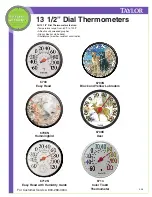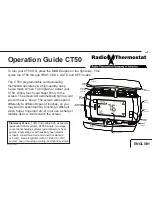
12. Information on contact measurement
10
11. Information on infrared (IR)
measurement
11.1 Measuring method
IR measurement is a visual measurement
Keep lens clean.
Do not carry out measurement with a foggy lens.
Keep the measuring range (the range between the instrument
and the measurement object) free of obstacles. There must be
no particles of dust or dirt, no humidity (rain, steam) and no
gases.
IR measurement is a surface measurement
If there is dirt, dust, frost, etc. on the surface, only the outermost
layer is measured, i.e. the dirt.
For vacuum-packed food, do not measure at air pockets.
Where the values are critical, always measure separately
with a contact thermometer. Particularly in the food sector:
measure core temperature with a penetration/immersion
thermometer.
Adjustment time
If the ambient temperature changes (change of location,
e.g. measurement indoors/outdoors), the instrument must be
allowed to equalise for 15 minutes for infrared measurement.
11.2 Emissivity
Materials have different emission levels. This means they emit
various amounts of electromagnetic radiation. The emission level
of the instrument has a default setting of 0.95. This is ideal for
the measurement of food, non-metals (paper, ceramic, gypsum,
wood, paints and varnishes) and plastics.
pr
eliminary
11
de
en
fr
es
it
pt
sv
nl
??
??
11.3 Measuring range, distance
Depending on the distance of the measuring instrument from the
measurement object, a specific measuring range is recorded.
Measuring lens (ratio of distance : measuring range)
In italics = laser
Not in italics = measuring range
* Optimised measuring distance
12. Information on contact
measurement
Observe the minimum penetration depth for immersion/
penetration probes:
10x probe diameter
Avoid using in aggressive acids or alkalis.


























